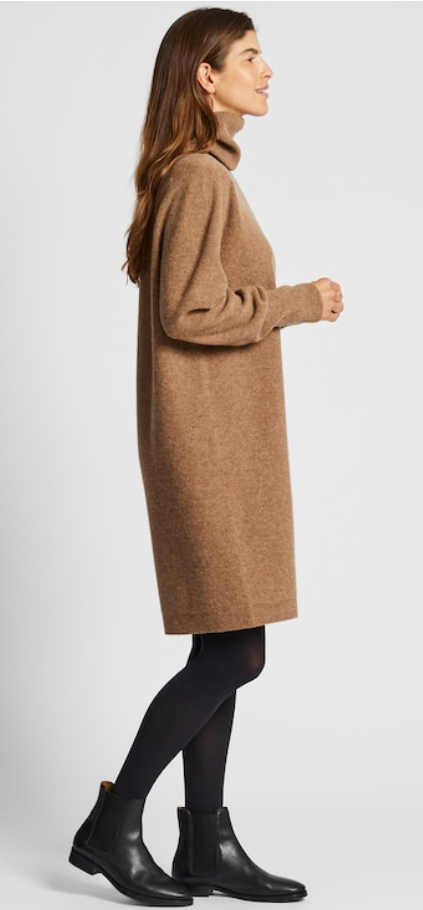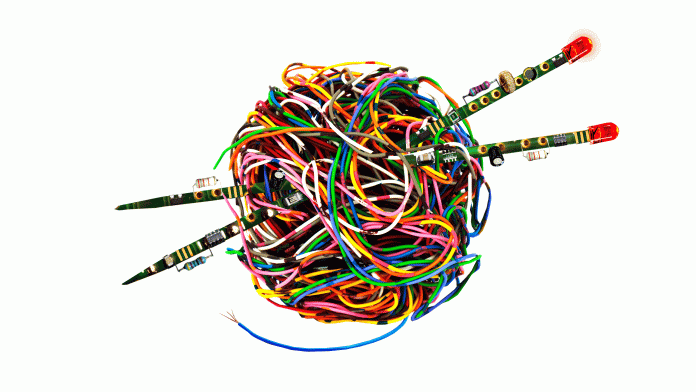by: Julian Goldman

Today, you can buy a $40 dress from Uniqlo that was produced by a knitting machine in one piece with no cutting or sewing—which means no seams and almost no wasted fabric. This “seamless” or “whole garment” knitting technique was first developed in Japan 20 years ago, but high costs have prevented it from hitting the mainstream until recently. The machines work something like 3D printers for clothes: yarn is loaded in, the machine is programmed, and out comes a full garment.
When I asked Rebeccah Pailes-Friedman, the founder of Interwoven Design Studio, why knitting has been a focus for e-textile makers, her answer was simple: “The majority of what people own is already knitted,” she said. “It’s what people want to put on their body.”
According to Despina Papadopoulos, the founder of Principled Design, knitting also has special attributes that are particularly suited towards advanced applications. Principled Design recently collaborated with Ralph Lauren for the battery-powered, self-heating 2018 US Winter Olympic Team Jackets, and Papadopoulos described modern knit technology as an expansion of control over form, especially with the integration of conductive yarns.
“You have more control in terms of dimensionality than you have with woven fabric,” Despina Papadopoulos, the founder of Principled Design said. “That dimensionality gives you both the ability to manipulate the structure of the fabric as well as to create pockets, to create layered structures that make incorporating electronics seamless, hidden, in a way that you cannot with other technologies.”
For example, a knit machine programmer can create a small “patch” of conductive yarn, stack a non-conductive above it, and then another conductive patch on top of that to make a sandwich. As the two conductive sections get closer together, they make more and more contact through the non-conductive but porous sandwich “filling.” This increased conductivity can be measured by a microchip to create a pressure sensor. Companies like Sensoria are already selling clothing with smart sensors laminated onto their products.
“In the years ahead, the basic properties, capabilities, and functions of fibers are going to increase in a way that is similar to what happened with Moore’s Law in computer chips,” – Tony Chahine, CEO of Myant
“In the years ahead, the basic properties, capabilities, and functions of fibers are going to increase in a way that is similar to what happened with Moore’s Law in computer chips,” he said. “There, the function doubled every 18 months. In the case of filaments I think it’s going to double over a much shorter period of time, and you’ll see this consistent increase in the capabilities of fibers and yarns and filaments.”- Tony Chahine, CEO of Myant.
Myant is developing socks that not only comfortably insulate and protect your feet, but also give them targeted compression, measure your posture and footfall, and even heat your feet automatically when they get cold. But the biggest question going forward is “What does the consumer want?” A wearable computing platform would inevitably create huge amounts of data from our bodies, something the public is understandably wary about.
The integration of tech into clothing is an important thing to keep an eye on as people will start to demand more out of their clothing. By adding additional features such as bio trackers people will be able to gain a more accurate picture of their daily life. I can see this being integrated into outdoor equipment, sensors that tell people when to rest on a long hike, GPS, etc.
Originally Published By: Gizmodo




